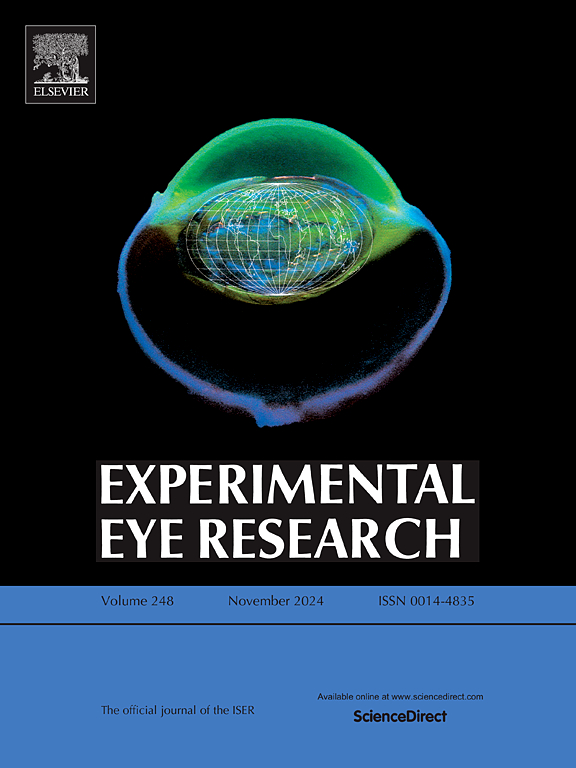miRNAs、piRNAs和lncRNAs:糖尿病视网膜病变中调节神经血管单元的三组非编码rna及其治疗潜力
IF 3
2区 医学
Q1 OPHTHALMOLOGY
引用次数: 0
摘要
糖尿病视网膜病变(DR)一直被认为是一种视网膜微血管疾病,是糖尿病的主要并发症之一。然而,最近的证据表明,DR是一种神经血管疾病,其特征是视网膜神经组织变性和微血管异常,包括缺血、新生血管和血视网膜屏障破裂,最终导致失明。视网膜和血管细胞之间的复杂关系构成了一个神经血管单元,一个由视网膜神经元、神经胶质细胞、免疫细胞和血管细胞组成的多细胞框架,促进了神经血管耦合,将神经元活动与血流联系起来。这些神经血管成分之间的相互联系由于高血糖而受到损害,并进一步与疾病早期DR的进展有关。因此,需要采取治疗方法,在发病初期就采取行动,延缓或预防发病机制,以避免DR的发展。非编码rna (ncrna),如微rna、piwi相互作用rna和长链非编码rna,调节神经血管单元中的各种细胞成分。这些ncrna是dr中神经退行性变、细胞凋亡、炎症和氧化应激的关键调节因子。本文将简要讨论与ncrna表达改变相关的研究,以及它们对神经血管偶联解体的影响,以了解ncrna作为治疗这种使人衰弱的疾病的治疗靶点的潜力。本文章由计算机程序翻译,如有差异,请以英文原文为准。
miRNAs, piRNAs, and lncRNAs: A triad of non-coding RNAs regulating the neurovascular unit in diabetic retinopathy and their therapeutic potentials
Diabetic Retinopathy (DR), a leading complication of diabetes mellitus, has long been considered as a microvascular disease of the retina. However, recent evidence suggests that DR is a neurovascular disease, characterized by the degeneration of retinal neural tissue and microvascular abnormalities encompassing ischemia, neovascularization, and blood-retinal barrier breakdown, ultimately leading to blindness. The intricate relationship between the retina and vascular cells constitutes a neurovascular unit, a multi-cellular framework of retinal neurons, glial cells, immune cells, and vascular cells, which facilitates neurovascular coupling, linking neuronal activity to blood flow. These interconnections between the neurovascular components get compromised due to hyperglycemia and are further associated with the progression of DR early on in the disease. As a result, therapeutic approaches are needed to avert the advancement of DR by acting at its initial stage to delay or prevent the pathogenesis. Non-coding RNAs (ncRNAs) such as microRNAs, piwi-interacting RNAs, and long non-coding RNAs regulate various cellular components in the neurovascular unit. These ncRNAs are key regulators of neurodegeneration, apoptosis, inflammation, and oxidative stress in DR. In this review, research related to alterations in the expression of ncRNAs and, correspondingly, their effect on the disintegration of the neurovascular coupling will be discussed briefly to understand the potential of ncRNAs as therapeutic targets for treating this debilitating disease.
求助全文
通过发布文献求助,成功后即可免费获取论文全文。
去求助
来源期刊

Experimental eye research
医学-眼科学
CiteScore
6.80
自引率
5.90%
发文量
323
审稿时长
66 days
期刊介绍:
The primary goal of Experimental Eye Research is to publish original research papers on all aspects of experimental biology of the eye and ocular tissues that seek to define the mechanisms of normal function and/or disease. Studies of ocular tissues that encompass the disciplines of cell biology, developmental biology, genetics, molecular biology, physiology, biochemistry, biophysics, immunology or microbiology are most welcomed. Manuscripts that are purely clinical or in a surgical area of ophthalmology are not appropriate for submission to Experimental Eye Research and if received will be returned without review.
 求助内容:
求助内容: 应助结果提醒方式:
应助结果提醒方式:


